PCMark 10
We ran two benchmarks using PCMark 10: the Full System Drive Benchmark as well as the Data Drive Benchmark.
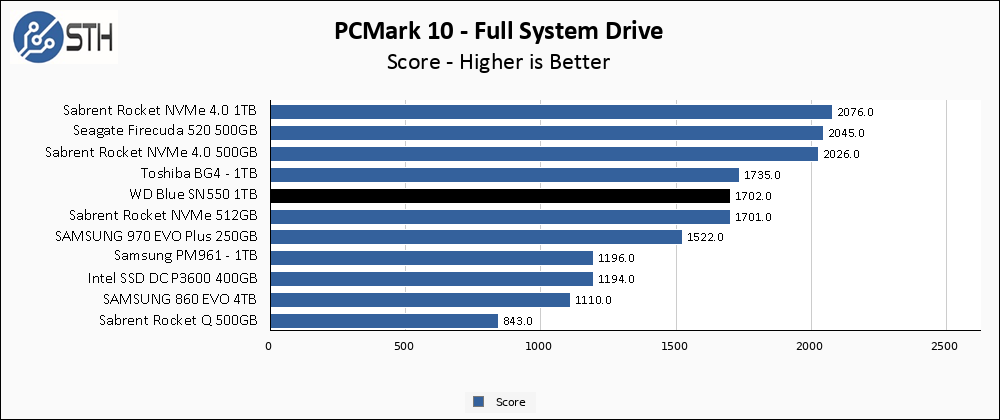
The WD Blue SN550 1TB lands squarely in the middle of the pack, which seems to be exactly where it was designed to land.
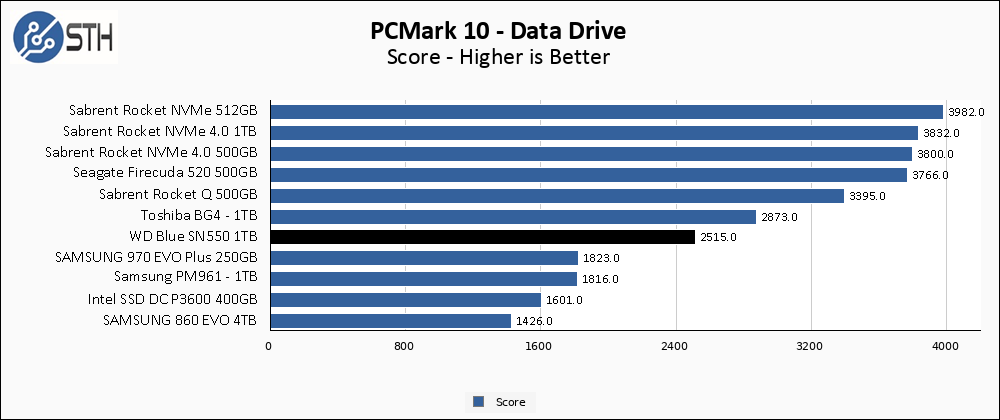
Just like the Full System Drive Benchmark, for the Data Drive benchmark, the WD Blue SN550 1TB manages to land exactly where it is designed – middle of the road.
SPECworkstation 3.0.2 Storage Benchmark
SPECworstation benchmark is an excellent benchmark to test systems using workstation type workloads. In this test, we only ran the Storage component, which is 15 separate tests.
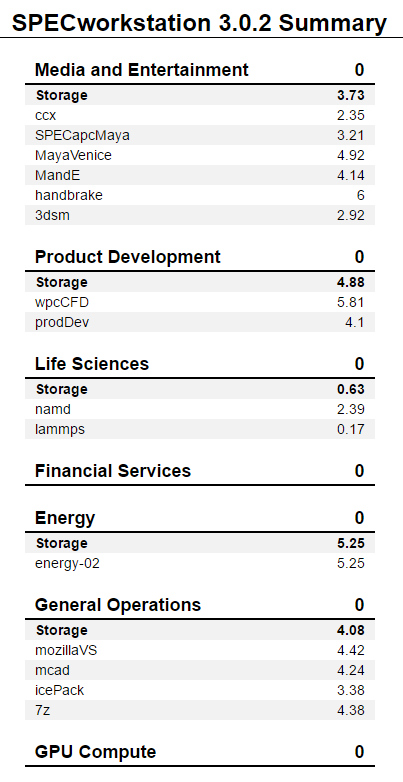
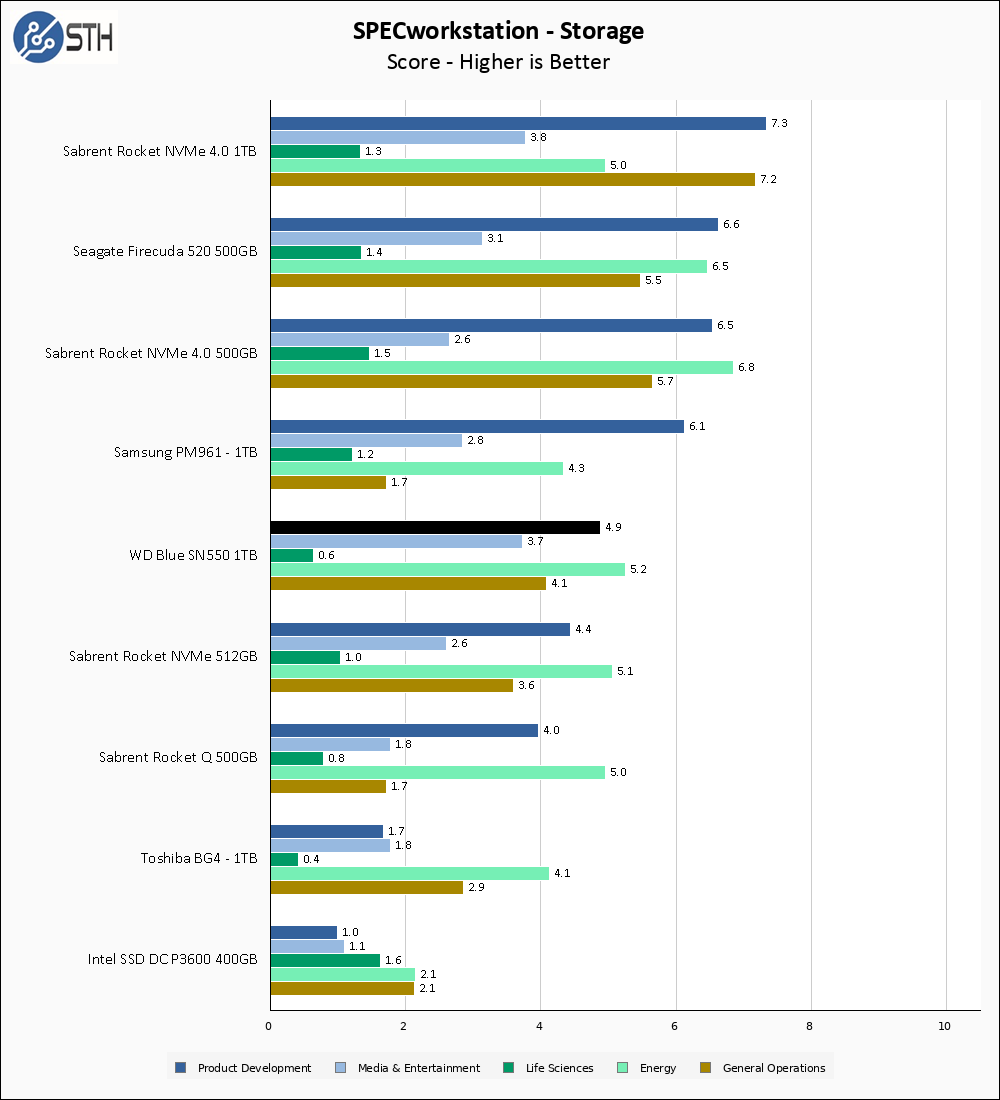
The WD Blue SN550 1TB finishes exactly where it started – right in the middle of our result set.
Temperatures
We monitored the idle and maximum temperature during testing with HWMonitor to get some idea of the thermal performance and requirements of the drive. Please keep in mind that our test bench is an open frame chassis in a 22C room, and is thus not representative of a cramped low-airflow case.

We are unsure whether the unusual PCB layout of the WD Blue SN550 1TB had an impact on the thermal performance, but regardless of the cause, the thermals were completely acceptable. Decently low idle temperatures and a manageable 61C maximum should present no problems for most common deployment scenarios.
Final Words
The WD Blue SN550 1TB is a mainstream PCIe 3.0 SSD that retails for around $125. At this price point, you are paying a small premium for the WD brand; other SSDs from smaller brands are available for the same price or less and some of those drives offer better-rated performance. With that said, many of the less expensive 1TB drives are QLC and the WD Blue SN550 will hold up better under sustained use thanks to using TLC. The lack of a DRAM cache had some negative impact, but an acceptable amount. This indicates that the controller and its built-in SRAM cache were up to the task. As intended, the WD Blue SN550 1TB maintained very middle of the road performance for a PCIe 3.0 SSD and would be appropriate for use as a workstation drive, server boot volume, or SSD read cache drive for a storage array or NAS device.
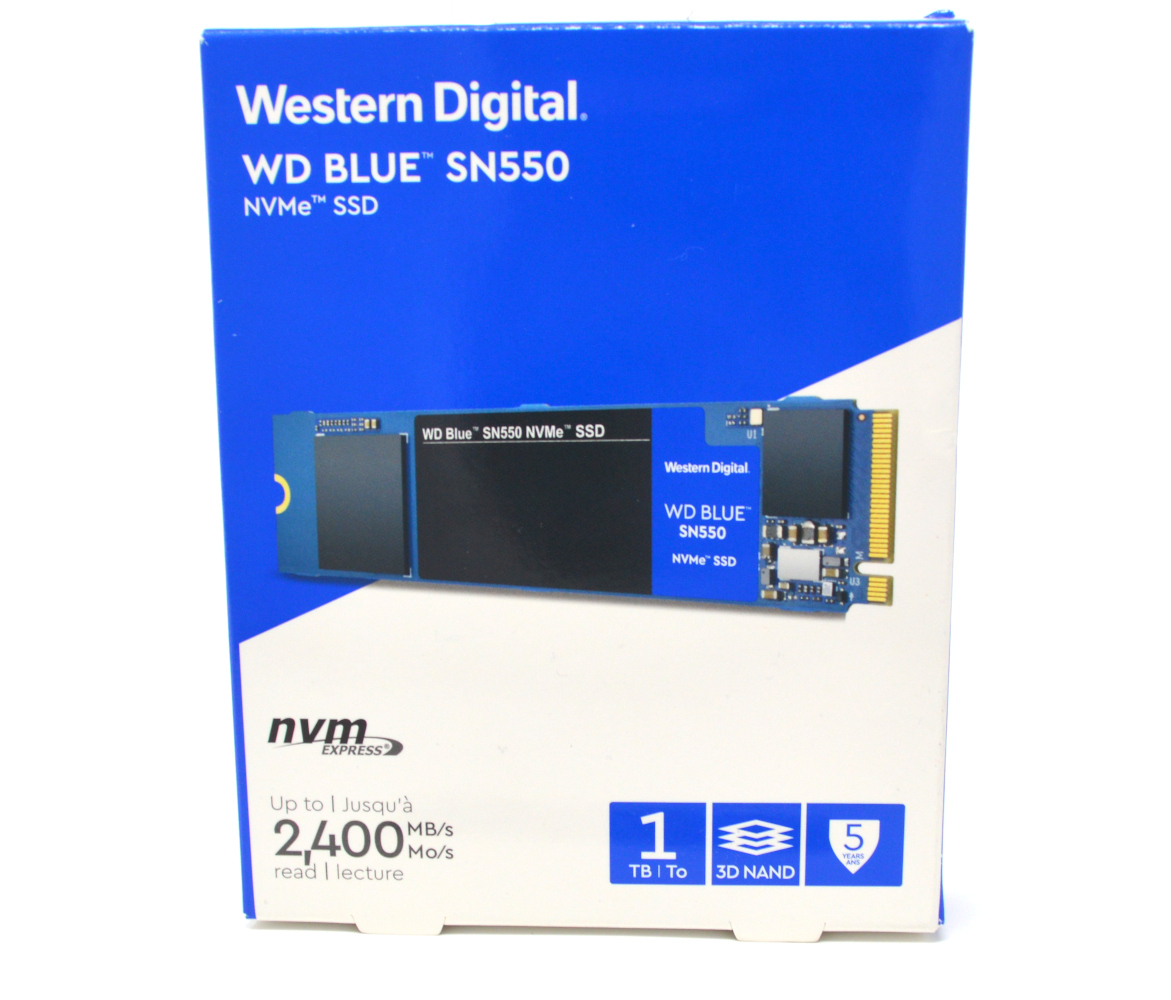
In the PCIe 3.0 space, the WD Blue SN550 1TB is nowhere near top tier PCIe Gen3 performance, but it still clearly distances itself from any SATA based competitor. It is also below many PCIe Gen3 and Gen4 SSDs. While many of our readers may want to purchase higher-end drives for themselves, these drives are often used in desktops to provide “NVMe” SSDs at a relatively low cost. That can be important for some of our systems integrator readers.
At the $125 price point, you are mostly purchasing the WD brand, since higher performance drives are available from smaller vendors. For some buyers though, that tradeoff will be acceptable, and as long as you have no need for chart-topping performance the WD Blue SN550 1TB can be a solid choice for a mainstream SSD.




Thanks for the review!
One suggestion: 10GB may be even to small.
Others for example also review with copying a specific 100GB set of mixed files, and this is where the performance is truly showing.
Even though 10GB is enough to fill most DRAM buffers, it is not enough to fill the pseudo SLC buffer on TLC or QLC drives, only if the whole drives are nearly totally full anyway.
So what you are mesuaring is only the pseudo SLC buffer, which has nothing to do with how the drive performs when that buffer is filled.
Usually most drives only offer about 1/3 of the adverstised speed (DRAM and/or pseudo SLC buffer speed, the same as you benchmarked), if not much less.
To the topic of the SN550: It is IMHO the best value SSD right now. Much faster than QLC, only a bit slower than TLC in the 160€+ price range, and now for sale here often even as low as 90€ for 1TB!
Have in running 24/7 in my main server (KVM/Docker/SAMBA) without problems.
Steven,
In some cases, I’m limited by the tools I’m using for the benchmarks. However, some of the utilities use a bit more data than they indicate. CrystalDiskMark, for example, at its 8GB setting like I use is also set to 5 passes for a total of 40GB. It then runs 4 tests and both read and write for each, for a total of about 320G total read/write traffic. ATTO is like this as well; it reads and writes 8GB of data, but does so with that data in 20 different chunk sizes. Eventually, and specifically for more server oriented SSDs, I would like to develop my own benchmark scripts that better simulate a client/server transactional workload, but I’m not there yet.
@Will: Thanks for your (fast) reply!
I must make clearer that your approach certainly deserves praise for the extensiveness, as you use a wide selection of benchmarks and not only Crystal Disk Mark (the worst offender) and Atto like most. And its great to hear that you are planning to even write a custom bechmark script!
Maybe a cheap workaround for the time being would be to copy the method of using a predefined fixed set of mixed files of e.g. 100GB?
Another suggestion: Maybe you could reuse some of the work Michael Larabell does at Phoronix? Phoronix Test Suite is FOSS, and has already implemented a wide array of server workload as benchmark scripts.
Thanks again for your reply, and have a nice remaining Sunday!
My problem with using a predefined simple set of files for basic copy operations is multifold. Firstly, you have to copy from somewhere to somewhere. I could do everything within one drive, but then it makes it difficult to differentiate between read and write performance. If I copy from some other source, I have to ensure that the source of the files is having as little impact upon the copy process as possible. Additionally, the OS in play (Windows currently) can have buffers and caches and things that interfere in standard file copying processes. Lastly, a big file copy of a bunch of files just isn’t a particularly stressful I/O operation.
My idea of a good server style test would likely involve a small array of actual physical clients performing a scripted set of operations against a file server using the test SSD as its volume. Obviously networking would be an impact in this kind of scenario, and bypassing that bottleneck is a significant impediment to testing via this methodology. But it’s something I would like to eventually work towards!
Western Digital Hard Drive life only two years after there if you guys call Customer Service they did not reply correct information i have 2TB MY BOOK LIVE external hard drive after two years one day its did not start like there is no green light appeared on device so customer service representative advice buy Ac/Dc cable from amazon after buy cabel its not work than i call customer service they tell me pay some dollar and get your data from my cloud. So just think before buy products life cycle only two year if once warrenty finish than you have to pay more dolllar for download.
Steven,
We have some benchmarks that are similar to what Michael uses. We tend not to use it at STH as it has the possibility of breaking embargo with data. I know PTS has a feature to disable this, but even Michael broke the Rome embargo last year by publishing his results on the online PTS viewer. Most vendors do not care, but our tooling (even beyond this) is designed to never have that happen. Very conservative.
I do think longer and more extensive benchmarks are good. There is always the question of what makes sense for a consumer workload as well. All good questions and ones worth considering.
Looking at NVMe SSDs in this segment, it would be nice to have the ADATA XPG SX8200 Pro in future charts, too. Even though it has been available for quite some time, and there are many of reviews of it, it would be nice to have it as a reference to compare newcomers against, based on the same benchmarks and settings.
I think the course of action is clear: switch to Linux, mount with sync, and use a Ramdisk when possible. :D
Anyway, how a drive functions when mostly full is something important to know. For instance, I know to underprovision Intel 660p/665p drives because they get cranky when filled up.
Also, thermal limits. How do drives act when hot? One of my particular consumer cases is using them as external drives (backup, etc.) in Orica M.2 cases.
@Will and Patrick:
Wow, thanks for both of your replies!
If my critique came of as anything but positive and constructive, i have to apologize; My only gripe has been that the transfer rate without RAM+SLC-cache was not visible; And i do now understand that my proposition of using a mixed set of files is hardly useable for the reasons Will mentioned.
And when the in-development new testing scripts will be here eventually, they should put you to the top of SSD benchmarks easily!
And thanks to Patrick, those insights are one of the main reasons i am reading here and recommend your site wholeheartly. Did not know about the Embargo breaking issue, so another thing i have learned.
Much, much apprieciated! Both answering at all (which of course is not a given in this field) and for the insightful answers (which is even more rare)! :)